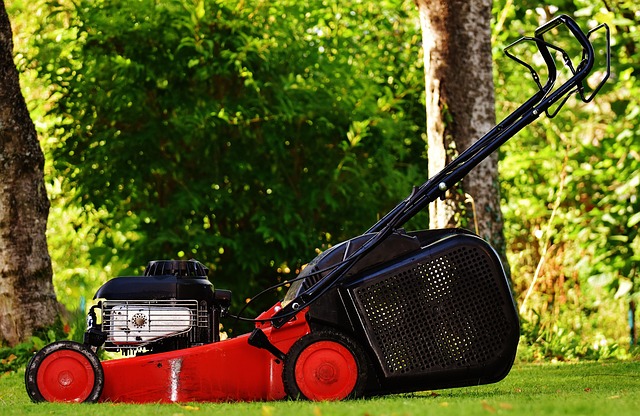
In the height of summer, the sound of lawn mowers can be heard echoing through neighbourhoods across the country. Summer is prime grass-cutting season, so we’ve put together a comprehensive guide on how to cut grass.
Make sure it’s safe to cut the grass
Before you begin mowing, it’s worth checking that it’s safe to do so. Clear your garden of any furniture, as well as any minor hazards like stones, twigs, leaves, etc. that could dull the blades of your mower. If it’s spring and you’re cutting your lawn for the first time this year, do a thorough check for hibernating animals like hedgehogs, who could be hiding out in leafy piles.
When should I cut grass?
Never mow your lawn when it’s wet. Always wait until the weather (and grass) is dry. Not only is it more pleasant to mow a dry lawn, but dry grass will cut more evenly. Mowing wet grass is more likely to lead to ruts in the lawn, clumping, and uneven cutting. It can also clog your mower. So, it’s best not to cut the grass until it's dry, which means not mowing in the early morning when there could still be dew on the grass. Not only is it arguably antisocial, but you could damage your lawn. As we’ve explained previously on this blog, the best time of day to mow is anywhere between 10am and 4pm to ensure you’re mowing dry grass and allowing it time to recover in the sunshine.
If you’ve got a newly-seeded lawn, give the grass its first cut when it reaches about 3in or 7-8cm in height. For well-established lawns, try and stick to the one-third rule by only mowing the top third of the growth. So, if your lawn mower is set for a 1in cut, let the grass grow no higher than 1.5in. Don’t panic – you don’t need to get the tape measure out for a blade of grass. Once you’ve mown the lawn, you can let it grow for roughly a week before mowing again.
Use the right lawn mower
Getting the right tool for the job is the best way to begin. So, investing in the right kind of lawn mower is probably the most important part of cutting your grass. Petrol and electric mowers have different advantages depending on how big your lawn is and what the terrain is like. If you use a petrol mower, avoid refilling it while on the lawn because petrol can damage grass. It’s also worth noting that an electric mower won’t create as much pollution or smell of petrol. Check out our guide to the different types of lawn mowers for more detailed advice.
Not only is a good mower worth the investment, keeping it in good condition is vital. Keeping the mower blades sharp will help them to last longer and ensure the cuts in the leaves of grass are clean. Dull blades can tear and smash grass, leading to roots being pulled out and other harmful conditions like red thread.
How to cut grass
Once you’ve got a good mower and the grass is a suitable length, it’s time to cut the grass.
It’s best to adjust your blades such that you don’t remove more than one third of the grass length. This ensures that the grass won’t be putting its energy into regrowing fully and can instead flourish as its green and wonderful self.
For the first cut of the year, put your blades on their highest possible setting. It’s best to keep your grass at about 4cm tall in spring and autumn. In summer you can mow it shorter to about 2.5cm because it will grow back faster.
Try also to vary the pattern of your mowing to avoid creating ruts and to ensure your grass stays vertical instead of leaning one way. One week you can try a spiral in from the edges of the lawn, and another you could go up and down in straight lines with a slight overlap. See the diagram below for other suggestions. You could even mow stripes into your lawn for an elegant aesthetic. Switching the mowing pattern should help ensure an even trim across the whole of the lawn. You may find it easier to mow around the edge of your lawn first to give yourself a turning border.
.jpg)
As you mow, you may see clippings being left on the grass. You can leave them where they are to both fertilise the lawn and help it retain moisture. Be careful, though: if you leave too thick a layer behind, this may damage the grass. Alternatively, you can put them in a compost bin and mulch them down with other carbon-rich material.
If you’re new to lawn ownership, or want expert advice on how to care for one, we offer a free lawn survey to assess the health of your lawn and advise you on the best course of care. Get in touch with us and request one today!
Free Lawn Survey